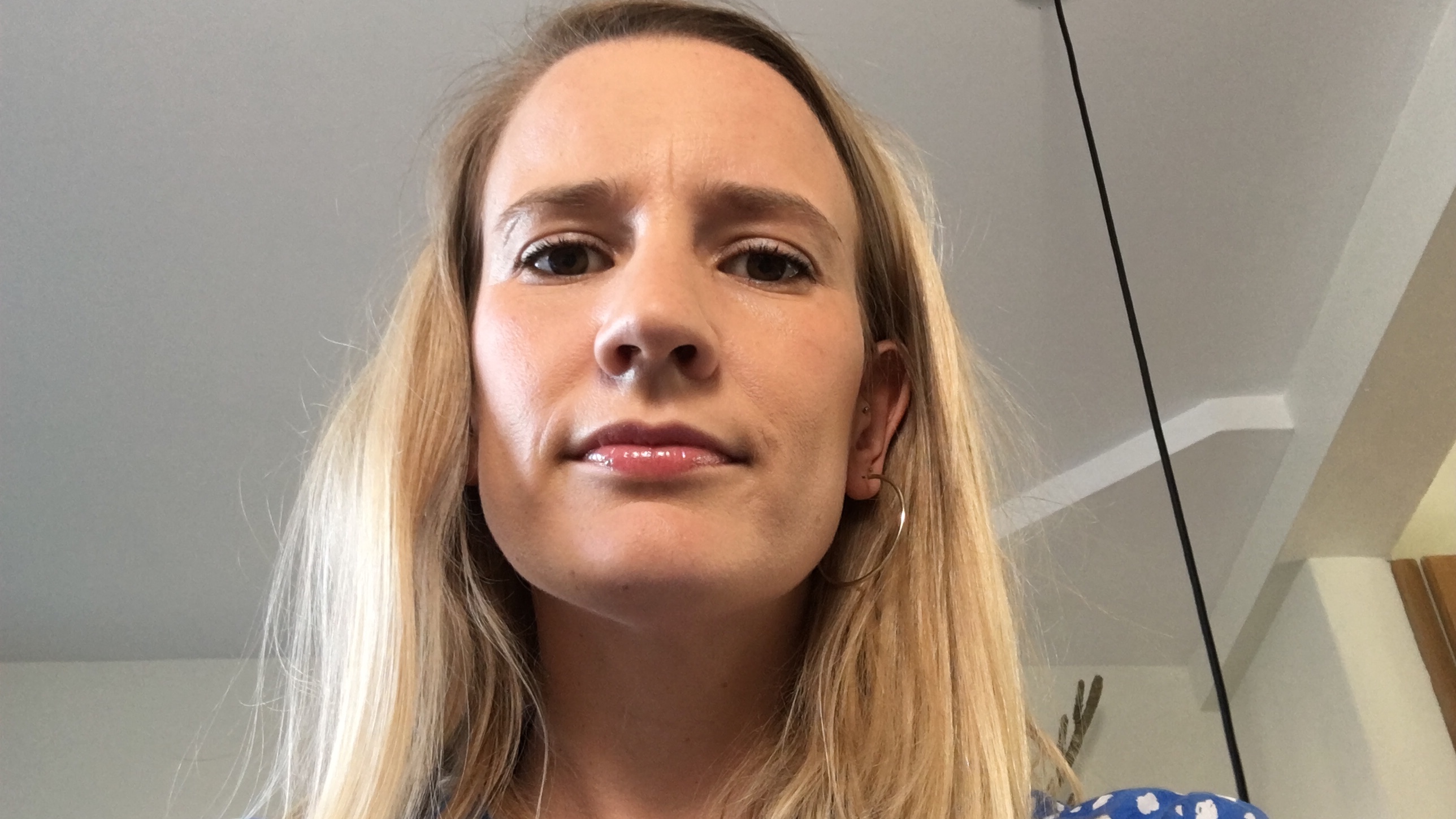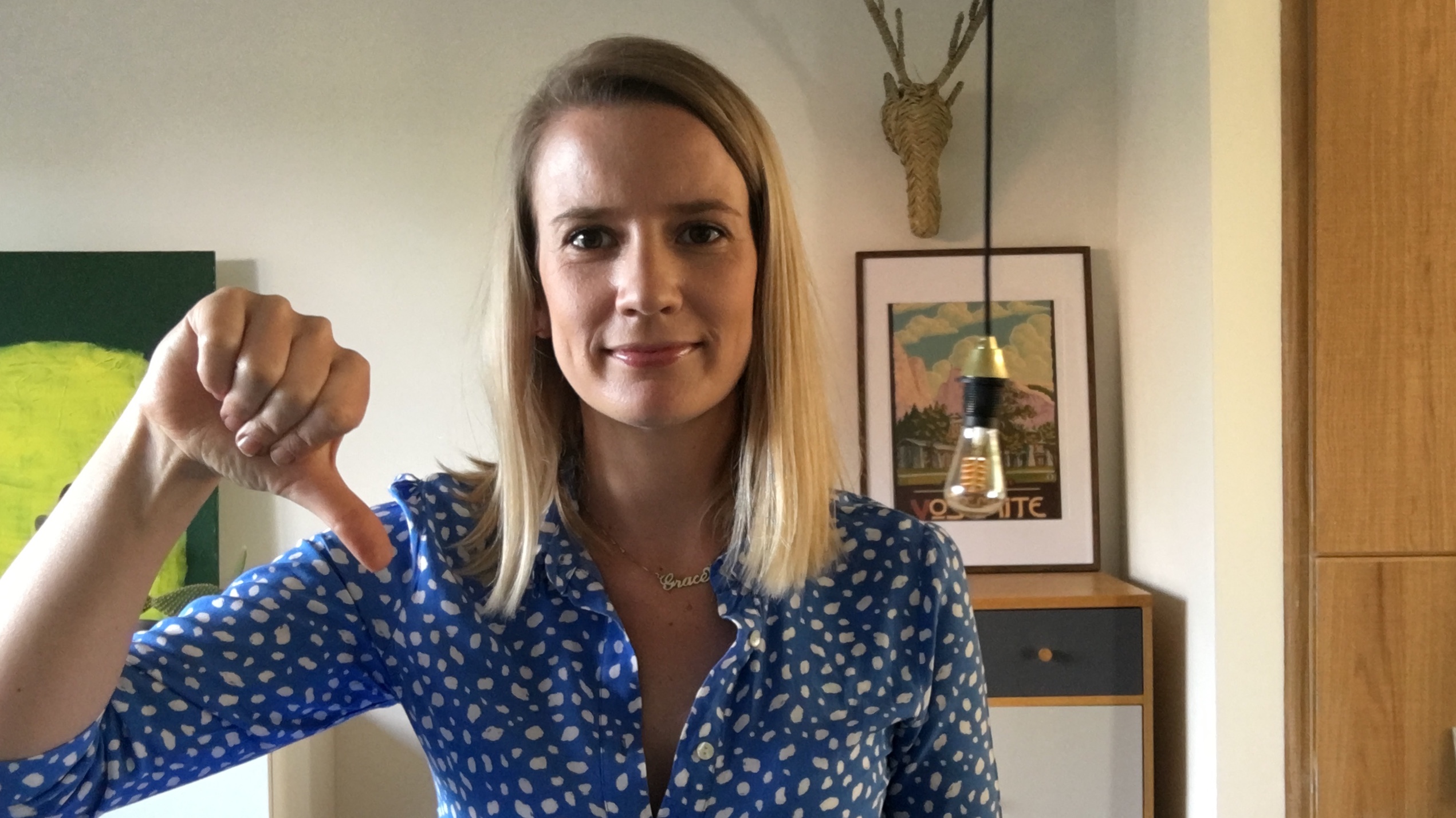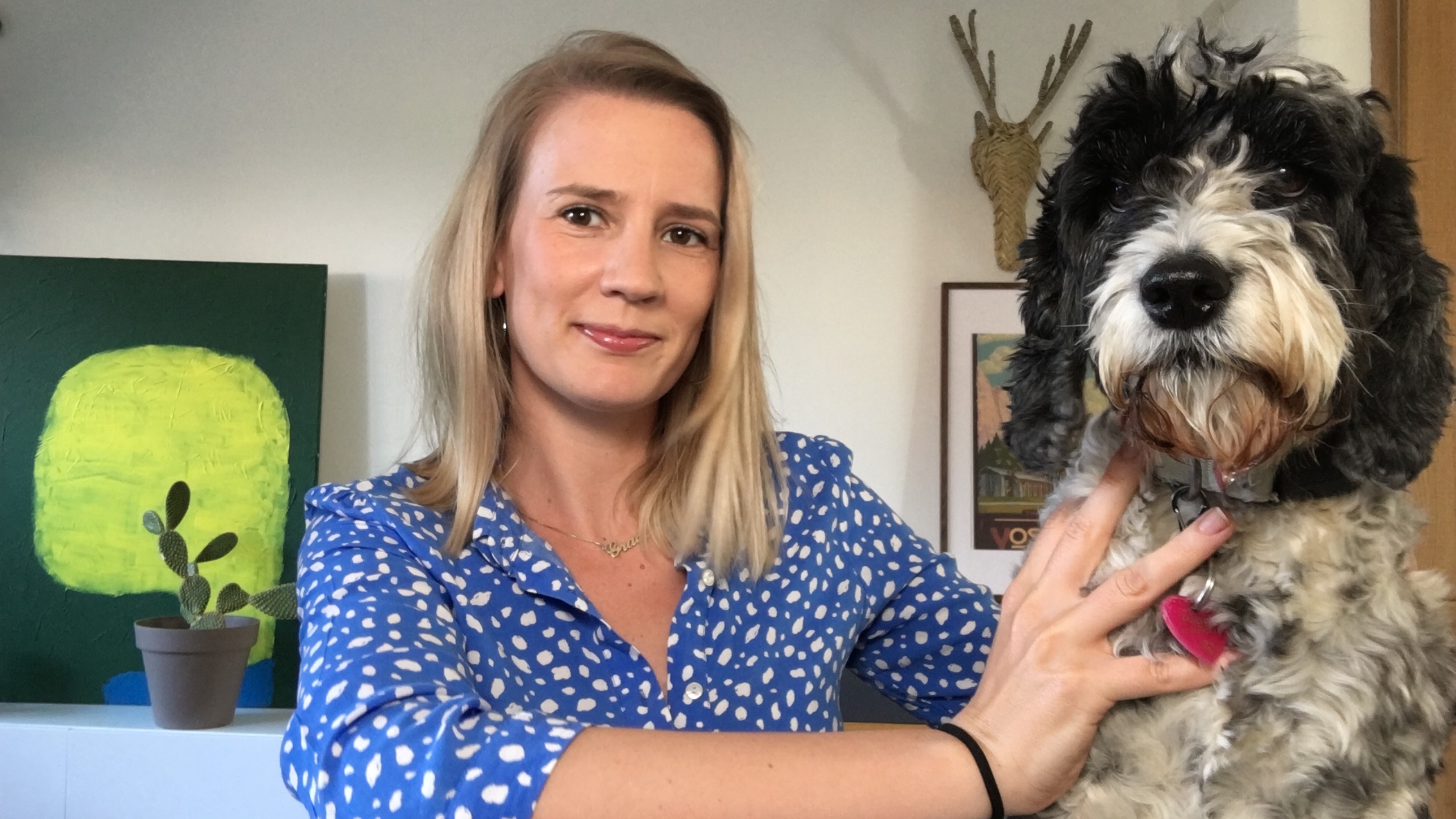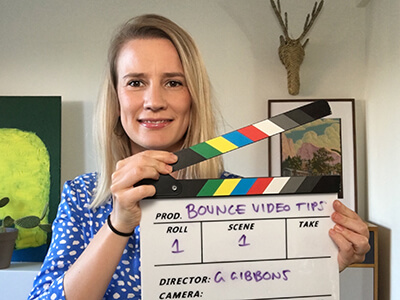About the author
Award-winning former BBC Producer, Grace Gibbons, is founder of video production company Bounce.
Are you looking to create viral marketing videos on your smartphone? Do you want to look more professional in your Zoom meetings? Or perhaps you want to take part in a live media interview. Here are seven tips to help you make great videos using just a laptop or your smartphone.
1. Camera position – film at eye level
This is the single most important thing you can do! Move your camera so it’s at eye level. I’ve seen so many interviews recently (including with celebrities and top NHS experts) where you’re essentially looking straight up someone’s nose!

If you’re using a laptop, put it onto a pile of books. If you’re filming on a phone, you can buy a small tripod or you can also blu tack it to the wall. It’s also a good idea to make sure you are not positioned too close to the camera.
2. Choose your framing – landscape or portrait
If your video is being used for YouTube, Twitter, LinkedIn or video conferencing then record in landscape mode (also known as 16:9). This means turning your phone horizontally.
If your video is going on Facebook or Instagram, then you can also use portrait mode (hold your phone vertically).
3. Dress your background
The background of your shot says so much about you and can really help grab your audience’s attention. On platforms like Facebook, you have around 1.7 seconds to grab your viewer’s interest. So you need to make your background is as intriguing as possible.
Get your phone or laptop out and play around with dressing your backdrop. It’s great to have something behind you to add some interest, rather than a plain white wall. Tidy away mess like stacks of files and papers in your office or ugly bins if you’re filming with a kitchen backdrop. Move things around. If you have a plant in the background, make sure it’s placed to the side of you and not behind your head. You want to avoid any strange looking plant ears!
You might want to dress your shot to suit your profession. For example, bookshelves for an academic, musical instruments for a musician, or computers screens for someone technical.

4. Light your shot
The number one rule for lighting is don’t sit in front of a window so the light is behind you and your face is back lit. Natural window daylight is actually the most flattering type of light you can use. But it needs to be coming from in front of you, so it lights up your face. This is not always possible, especially if you’ve set up your perfect office backdrop and the window in your room happens to be in the wrong place!
You can also use lamps in your house. Ambient, yellow house lights aren’t as flattering as natural light but they’re a lot better than no light at all. The important thing is to be able to see your face. If you’re going to be regularly filming, you might want to invest in some lighting. A ring light is often used by vloggers and is good because it lights your face without shadows. Make sure you buy a dimmable one that has also has a daylight setting. You can get them on Amazon from about £30. Generally the more you pay, the better the quality. The cheaper ones tend to have a bit of a green tint to them.

5. Think about sound
Once you’ve lit your shot, it’s good to plan the sound in your video. Because so much video is being recorded at home now, we’re getting used to hearing lower quality phone and laptop sound. You still need to make sure your room is quiet (not at the front of your house next to a noisy road, or drilling next door). If you get any interruptions like a loud bang, you’ll need to re-record that section of video. If you’re taking part in a live video conference, remember to use the ‘mute’ button on group chats when you’re not talking. That means your colleagues won’t any hear any awkward coughing or fidgeting!
If you want to invest in better sound you can buy a lapel mic to plug into your phone or laptop. They should be placed as close to you as possible and attached onto your collar. Lapel mics start at around £15. Again, generally the more you spend, the better quality you will get. Here is a reasonable lapel mic and a better quality one.
6. Add captions
Lastly, once your video is ready, you’ll need to think about whether to add captions. Captions (also known as subtitles) need to be used for social media videos where people tend to watch with the sound turned off. We recommend using them for all Facebook and LinkedIn videos. They are very fiddly to create yourself in post-production so a quick hack is to use the website, Rev.com to help your create them. Rev.com’s captions cost just $1.25 per minute but save you hours of hassle. Simply upload your video file and they will send you an ‘SRT caption file’ to upload with your video to social media. Here’s a video explaining how to do it.
7. Don’t forget to shut out pets to avoid any invasions!

Good luck with your project! For more video production tips including other types of video you can make during lockdown, check out our blog.
